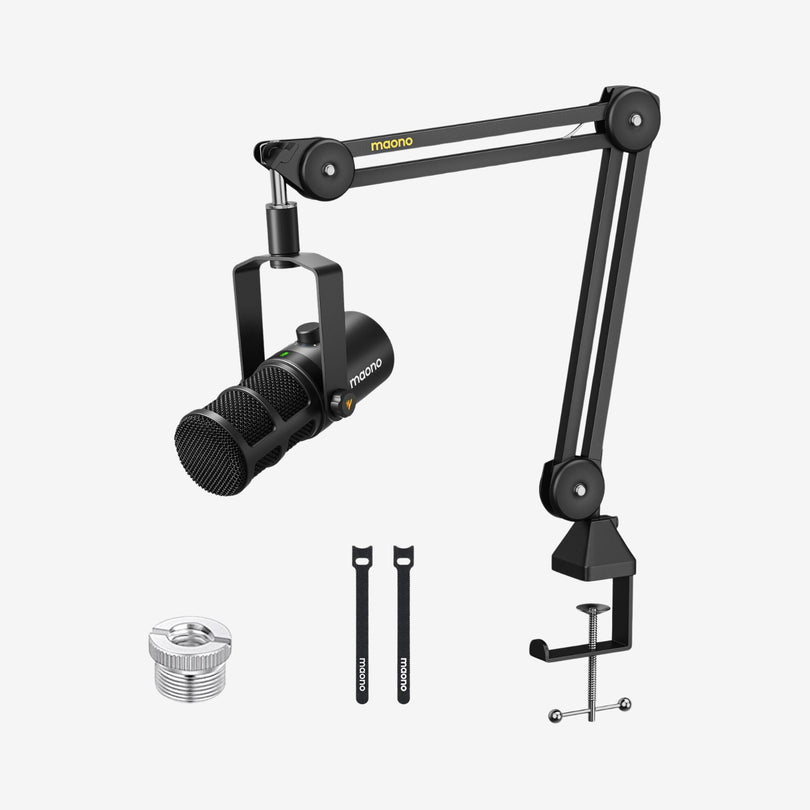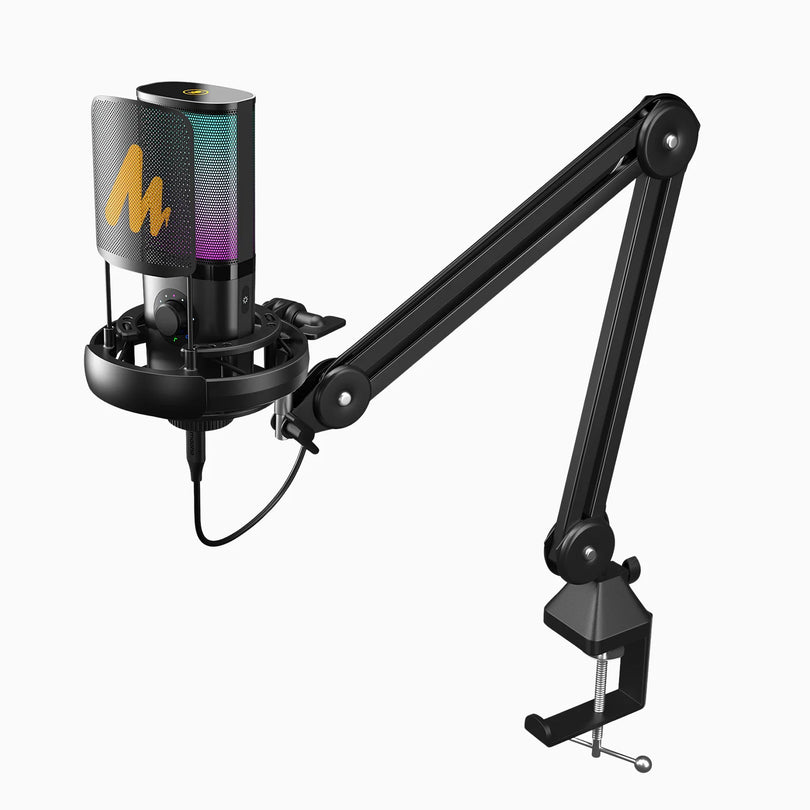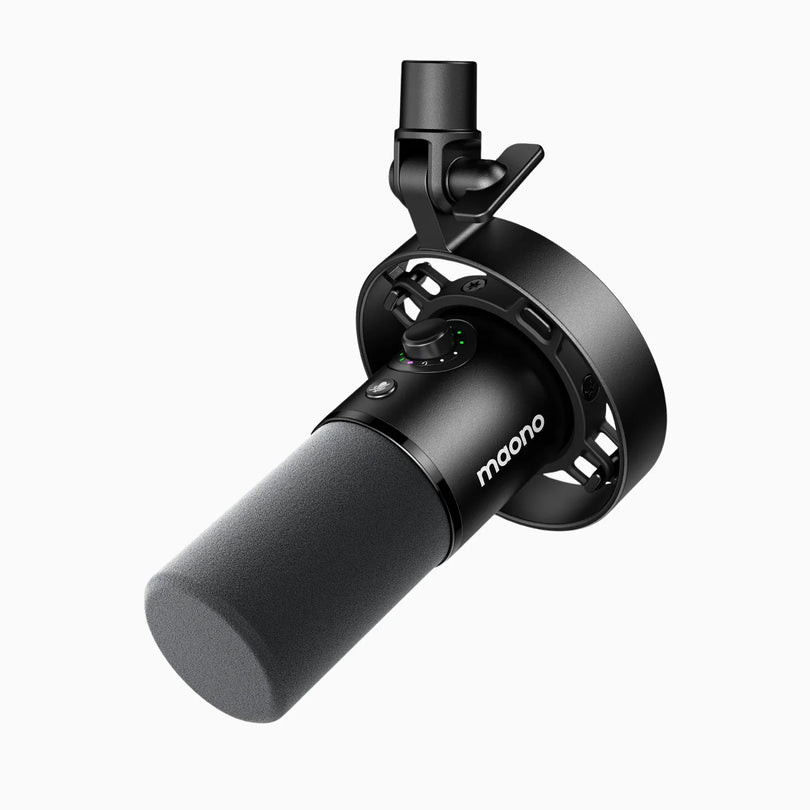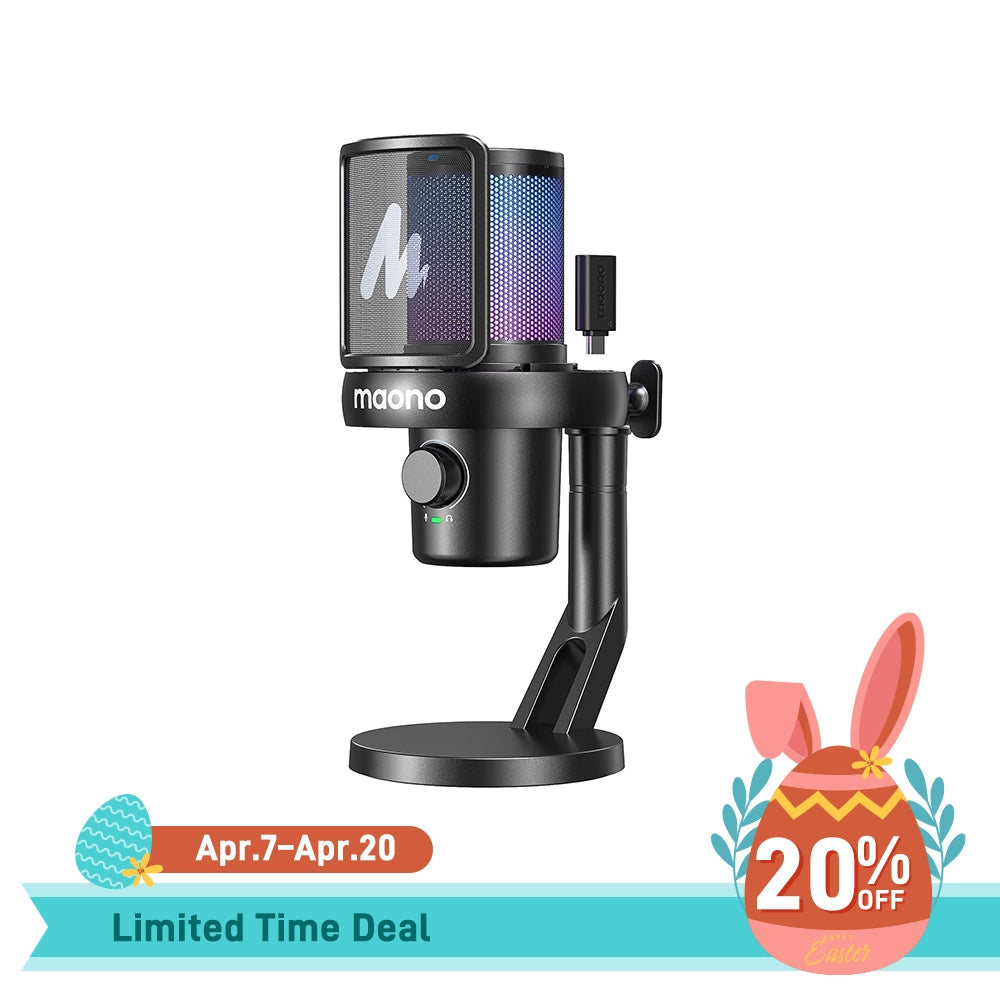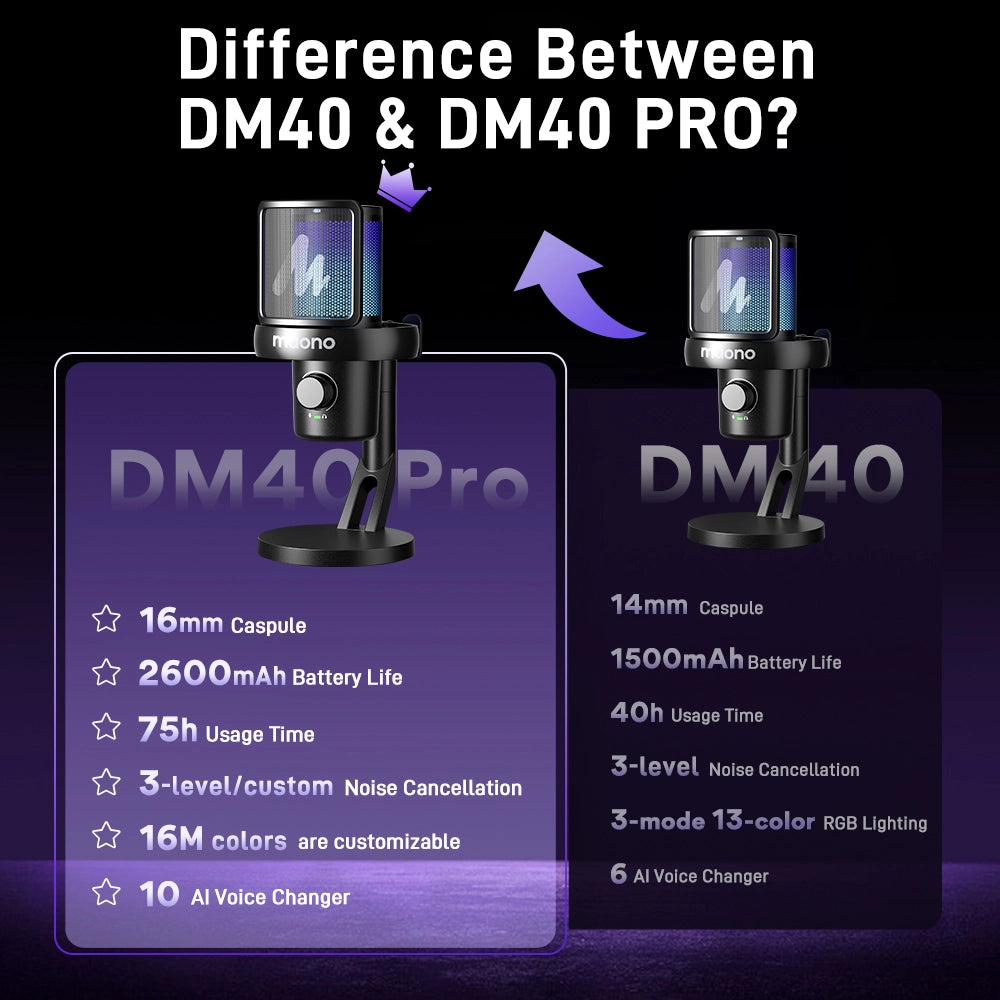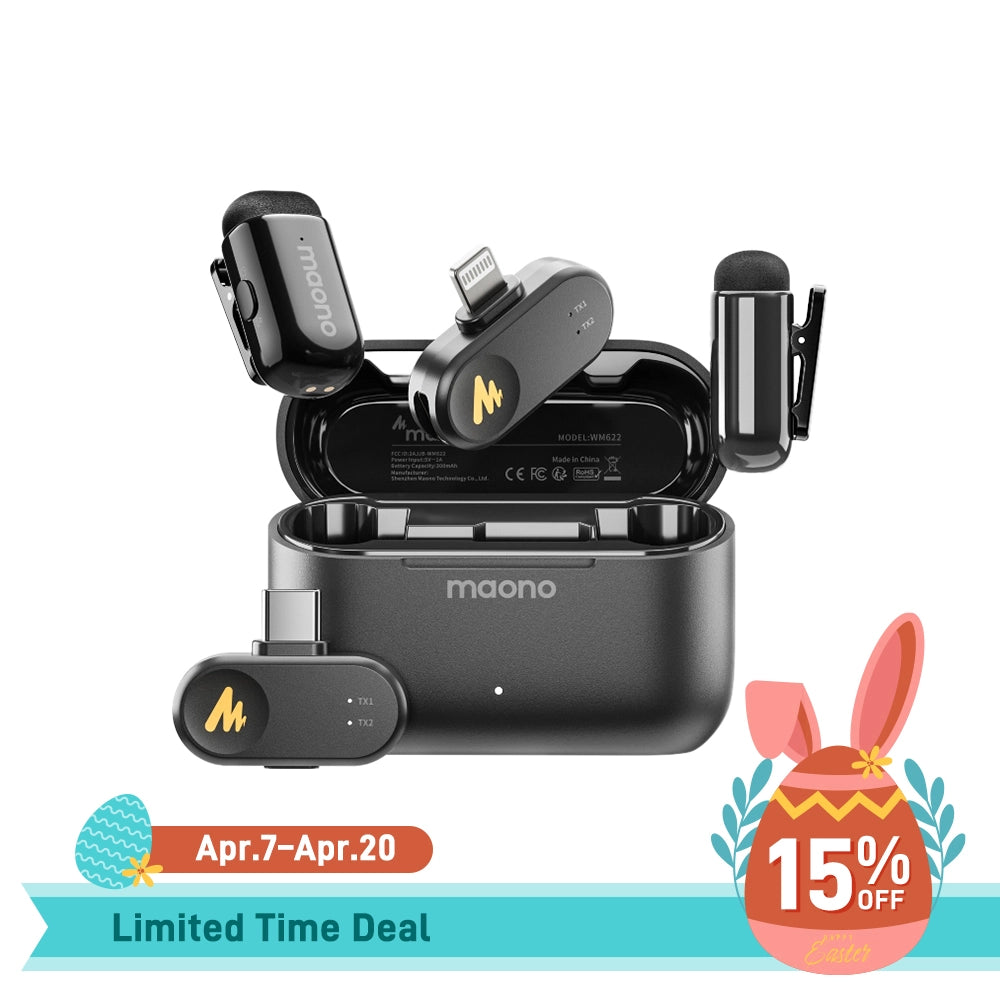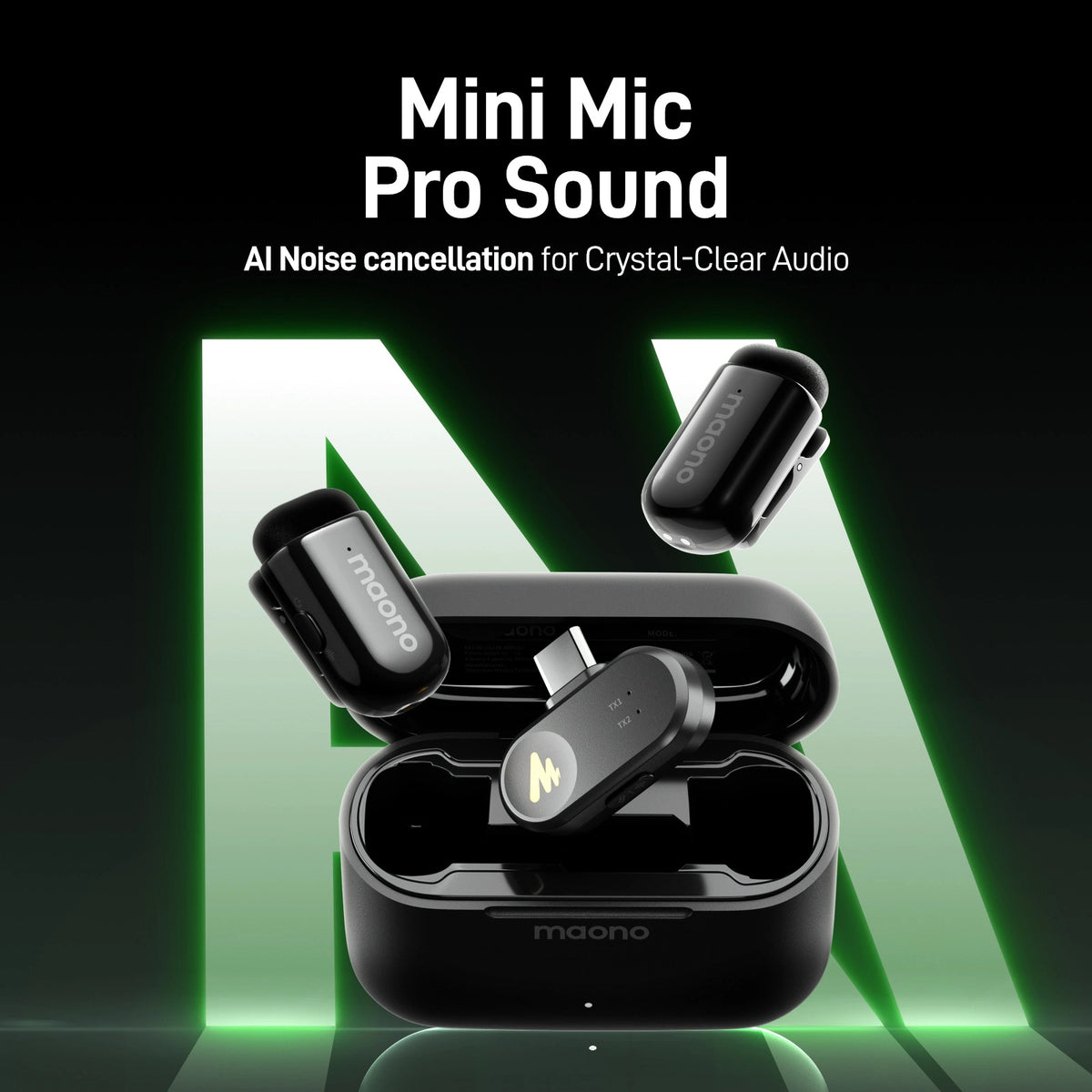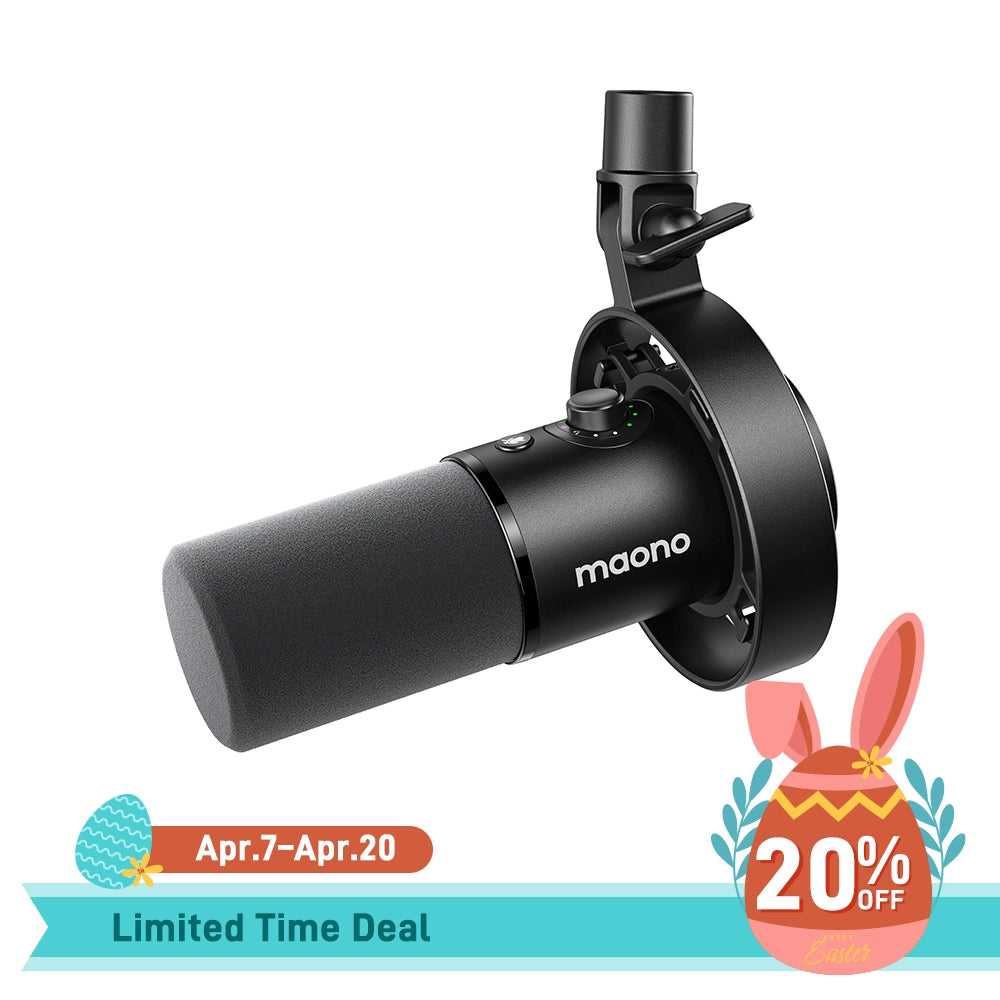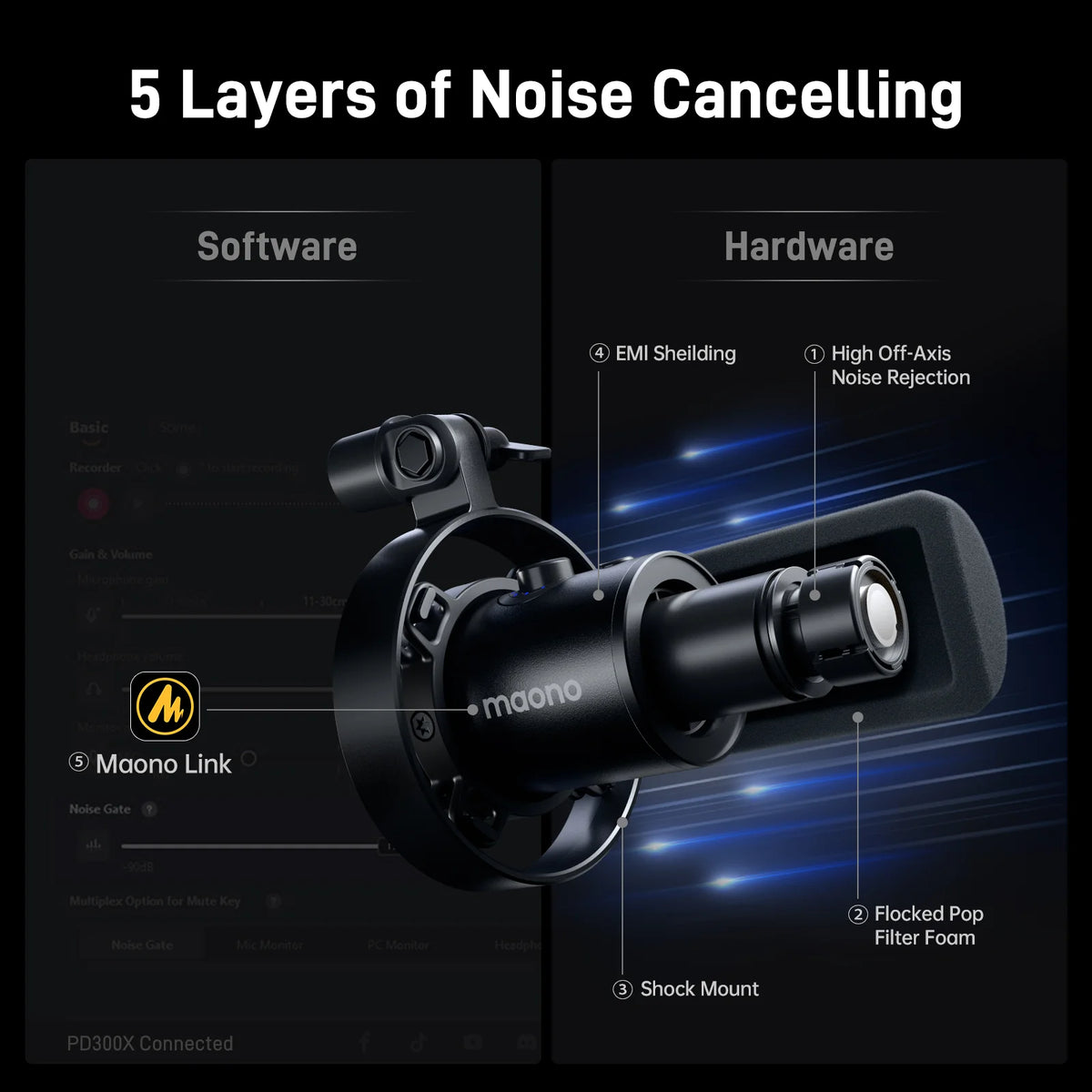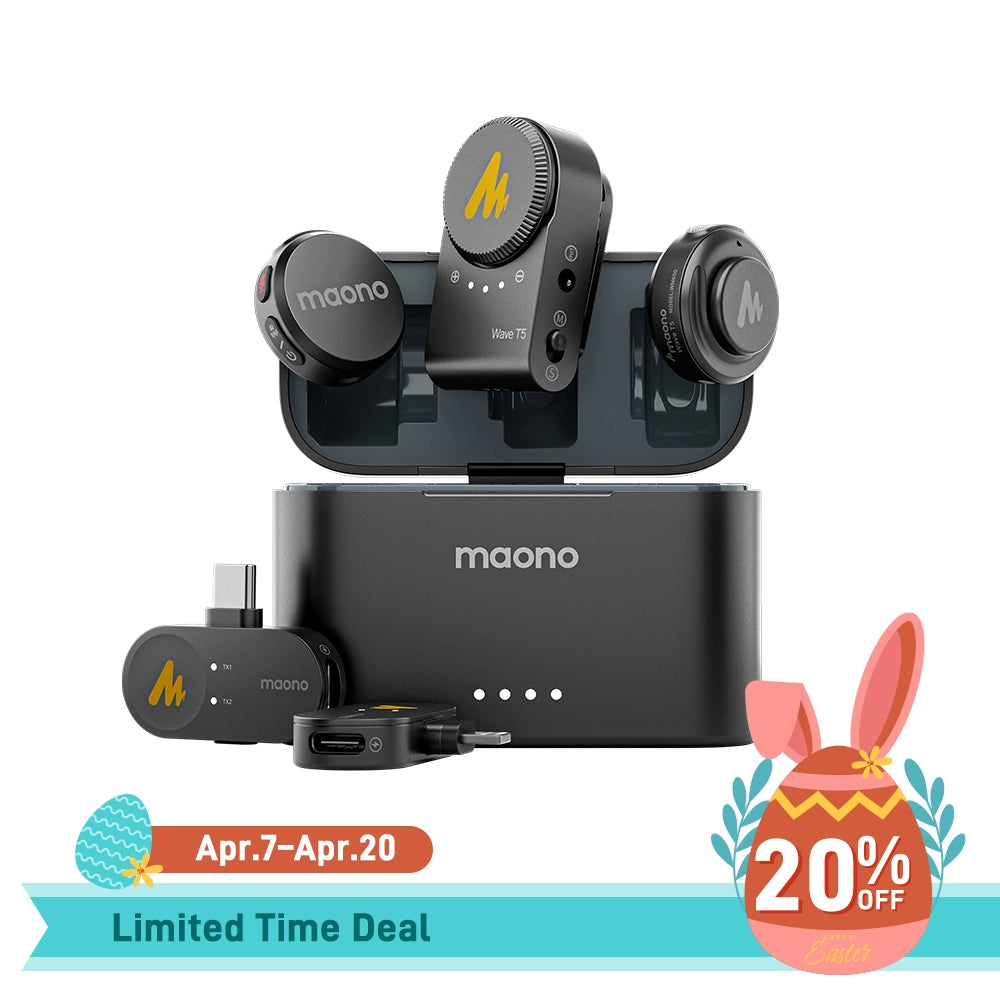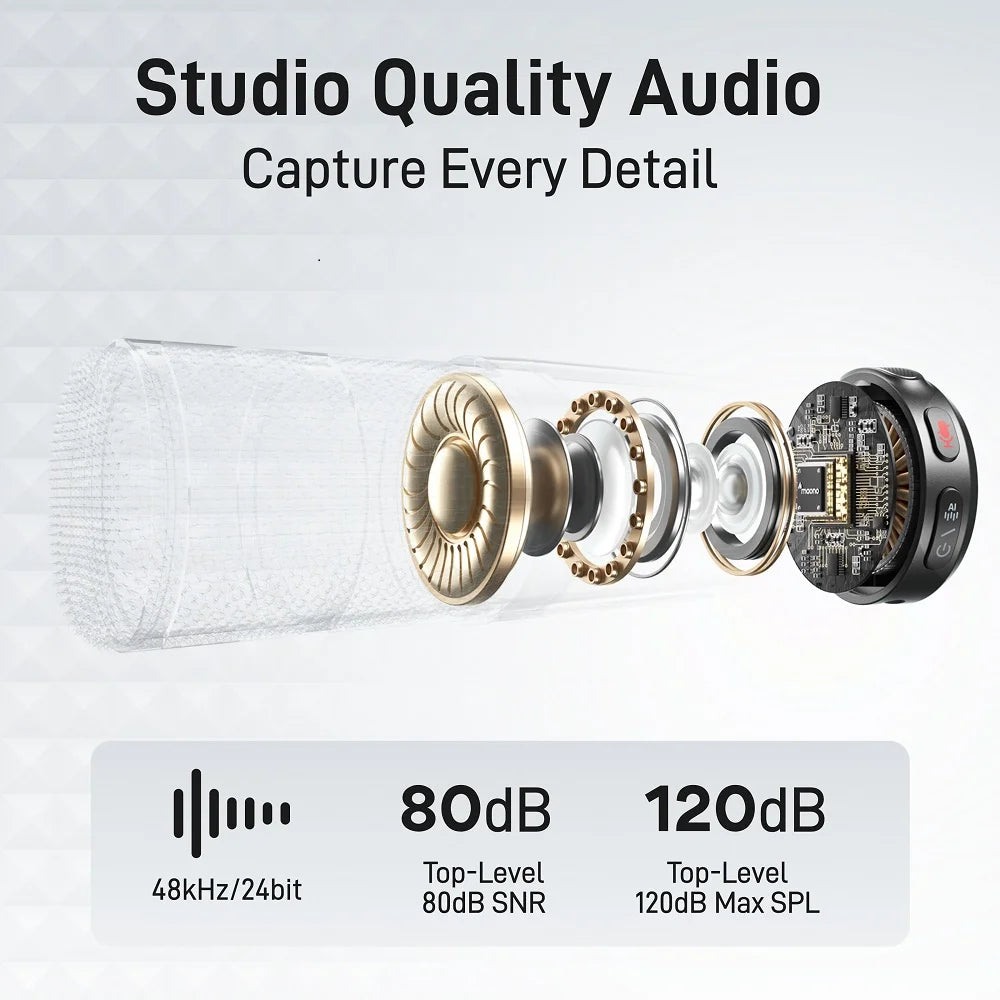Cooking is a breeze especially when it's your passion. However, if you're a beginner or an enthusiast in content creation, you should know by now that recording with a wireless microphone can help make things easier and make your videos sound clear, professional, and enticing. Since you're a beginner, you need to know how to set up a wireless microphone for your cooking vlogs. Here are some things you need to know when starting a cooking vlog.
Also read: Start a Cooking Vlog: Gear, Scripting & Editing Tips for Beginners
Introduction: Starting Your Cooking Vlog Journey
So, you've decided to start a cooking vlog. Maybe you've been told your recipes are to die for, or you're passionate about food and want to share that love with the world. Starting a cooking vlog is a fun and rewarding creative outlet—but it's not just about turning on the camera and whipping up your favorite dishes. If you're serious about growing your audience and monetizing your content, there are some essential things you need to know when starting a cooking vlog.
From mastering YouTube monetization to selecting the right wireless microphone for streaming in your kitchen, this guide covers everything you need to set your vlog up for success.
How Does YouTube Monetization Work for Cooking Creators?
YouTube monetization is one of the most popular ways for cooking vloggers to earn income. To start earning money on YouTube, you’ll need to join the YouTube Partner Program (YPP), which requires:
-
At least 1,000 subscribers
-
4,000 watch hours in the last 12 months OR 10 million Shorts views in the past 90 days
-
A linked AdSense account
Once you're eligible, YouTube allows you to earn through:
-
Ad revenue
-
Channel memberships
-
Super Chats
-
Merchandise shelf
-
YouTube Premium views
The more engaging your content and the longer viewers watch your videos, the more ad revenue you can earn.
How Much Can Beginner Cooking Vloggers Realistically Earn?
Let’s be realistic: you won’t get rich overnight. In the early stages, your earnings will be modest. Most beginner cooking vloggers earn between $3–$8 per 1,000 views through ads. That means if your video gets 10,000 views, you might make $30–$80 from ad revenue.
But monetization potential grows over time. As your subscriber base increases, so does the opportunity to attract brand deals, sponsorships, affiliate marketing income, and fan-based support platforms like Patreon.
Monetizing TikTok, Instagram, and Shorts with Cooking Clips
Short-form content is booming, and cooking creators can tap into platforms like TikTok, Instagram Reels, and YouTube Shorts to reach broader audiences. These platforms also offer monetization options:
-
TikTok Creator Fund (varies by region)
-
Instagram Reels Bonus programs
-
YouTube Shorts Fund (or ad revenue sharing)
The key here is to repurpose long-form content into bite-sized, engaging clips that highlight your best dishes or cooking hacks. These can attract thousands—even millions—of views.
Can I Earn from Short-Form Cooking Content Like Reels or Shorts?
Absolutely! In fact, short-form cooking content has a better chance of going viral due to its snackable format. Simple recipes, food hacks, plating techniques, and even grocery hauls can perform well in 15–60 seconds.
Beyond platform payouts, short-form content is great for:
-
Driving traffic to your main vlog channel
-
Growing your social media following
-
Attracting brand sponsorships
Many food creators use Shorts or Reels as a lead generator for their longer YouTube content. They shoot vertical videos using a lavalier mic for phone or even a compact phone lapel microphone for better sound when on the go.
Should I Start a Patreon for My Cooking Vlog?
Yes—if you’ve built a small but loyal audience, Patreon can be a great way to offer exclusive content and earn monthly income. You can offer tiers with benefits like:
-
Early access to videos
-
Downloadable recipe cards
-
Behind-the-scenes kitchen tips
-
Private cooking classes or Q&A sessions
Patreon also helps foster a deeper connection with your community. Even if only a few fans sign up, recurring income adds stability to your content creation.
What Kind of Ads Work Best for Food-Related Videos?
When you're creating content around food, the most effective ad categories often include:
-
Kitchen tools & appliances
-
Grocery delivery services
-
Meal kits (e.g., HelloFresh, Blue Apron)
-
Cooking courses or masterclasses
-
Health & wellness brands
Ads can be run through YouTube or integrated as brand partnerships. Sponsored recipe videos, product reviews, or even subtle product placements work well—as long as they remain authentic to your content.
How Do I Grow My Cooking Vlog Audience to Boost Revenue?
Audience growth is key to monetization, and it takes consistency and strategy. Here are some tips:
-
Post regularly (at least once per week)
-
Use engaging thumbnails and clear titles
- Optimize your descriptions and tags for SEO
-
Collaborate with other food creators
- Cross-promote on Instagram, TikTok, and Pinterest
- Interact with your audience through comments and polls
Cooking tutorials, "What I Eat in a Day" videos, and themed challenges (e.g., "7-Day Vegan Meal Prep") are evergreen formats that perform well on most platforms.
Should I Start a Blog Alongside My Cooking Vlog for SEO and Income?
Starting a food blog to complement your cooking vlog is a smart move. It gives you:
-
Another platform to monetize via ads (Google AdSense, Mediavine, etc.)
-
Better visibility on Google search
-
A place to share recipes, printable instructions, and affiliate links
You can embed your videos into your blog posts to increase both watch time and search visibility. Over time, your blog can become a traffic engine that fuels your YouTube and social media growth.
FAQs About Using a Wireless Microphone for Cooking Vlogs:
Why You Need a Wireless Microphone for Cooking Vlogs
Audio is just as important as video in your cooking vlog. A wireless microphone for streaming lets you move freely in the kitchen without worrying about wires. Whether you're slicing, dicing, or explaining a technique, viewers want to hear you clearly.
Wireless mics also reduce background noise from fans, blenders, and sizzling pans, offering a cleaner, more professional sound.
How Do I Set Up a Wireless Mic Transmitter & Receiver?
Here’s a quick setup guide:
-
Charge both transmitter and receiver units.
-
Plug the mic receiver into your camera or smartphone (via 3.5mm or USB-C/lightning adapter).
-
Clip the transmitter/mic to your shirt collar or apron.
-
Turn both devices on—many modern wireless mics automatically pair.
-
Test the sound level and do a short test recording before filming the full video.
For smartphone users, an Android lapel mic or phone lapel microphone can offer plug-and-play convenience.
Do I Need a Dual Wireless Mic System if I'm Cooking with a Guest?
Yes! If you’re filming with another person—say, a guest chef or a friend—it’s best to use a dual wireless mic system. This setup ensures both voices are recorded clearly without awkward passing of a mic.
The Maono WM821 is a great dual wireless mic system. It comes with two transmitters and one receiver, and works seamlessly in kitchen environments.
What’s the Best Wireless Mic for Video Recording in a Kitchen?
Two solid options for cooking vloggers include:
-
Maono Wave T5
Recommended video:
The Maono Wave T5 is a compact, high-quality wireless mic system with reliable audio, ideal for solo creators. It includes noise cancellation, easy setup, and a long range—perfect for moving around the kitchen.
-
Maono WM821
Tutorial video:
The Maono WM821 is a dual wireless mic system, great for interviews or cooking with a guest. It features crystal-clear sound, low latency, and stable transmission even in environments with metal and electrical appliances. It also works well as a wireless mic for DSLR setups.
Both mics are affordable and user-friendly, making them perfect for beginners and intermediate creators alike.
How Far Can I Move from the Camera with a Wireless Microphone Setup?
Most wireless mic systems offer a range of 50–100 feet (15–30 meters), depending on interference and obstructions. In a kitchen, you’ll typically have no problem moving around within this range. Amazingly, Maono Wave T5 claims to deliver audio transmission up to 300 meters or 1000 feet!
Just make sure there’s a clear line of sight between the transmitter and mic receiver, and avoid blocking the signal with metal appliances.
Wireless Microphone Setup Tips for Kitchen Environments
-
Avoid placing the mic too close to sizzling pans or steam, which can affect clarity.
-
Clip the mic on the side of your apron or collar, away from splashes or movement.
-
Check for interference from microwaves, blenders, and Wi-Fi routers.
-
Use windshields or foam covers to reduce noise from fans or hoods.
-
Always do a test recording before the final take to ensure sound quality.
Conclusion
Starting a cooking vlog is a rewarding way to share your love of food with a global audience. But behind every delicious dish on screen is a strategy—one that includes understanding monetization, creating content for multiple platforms, building an engaged audience, and investing in the right gear like a lavalier mic for phone or a wireless mic for DSLR.
Remember: great content + great audio = viewer trust and long-term success. Whether you're just starting or ready to turn your passion into a business, these tips will help you cook up a vlog worth watching—and maybe even worth subscribing to.


